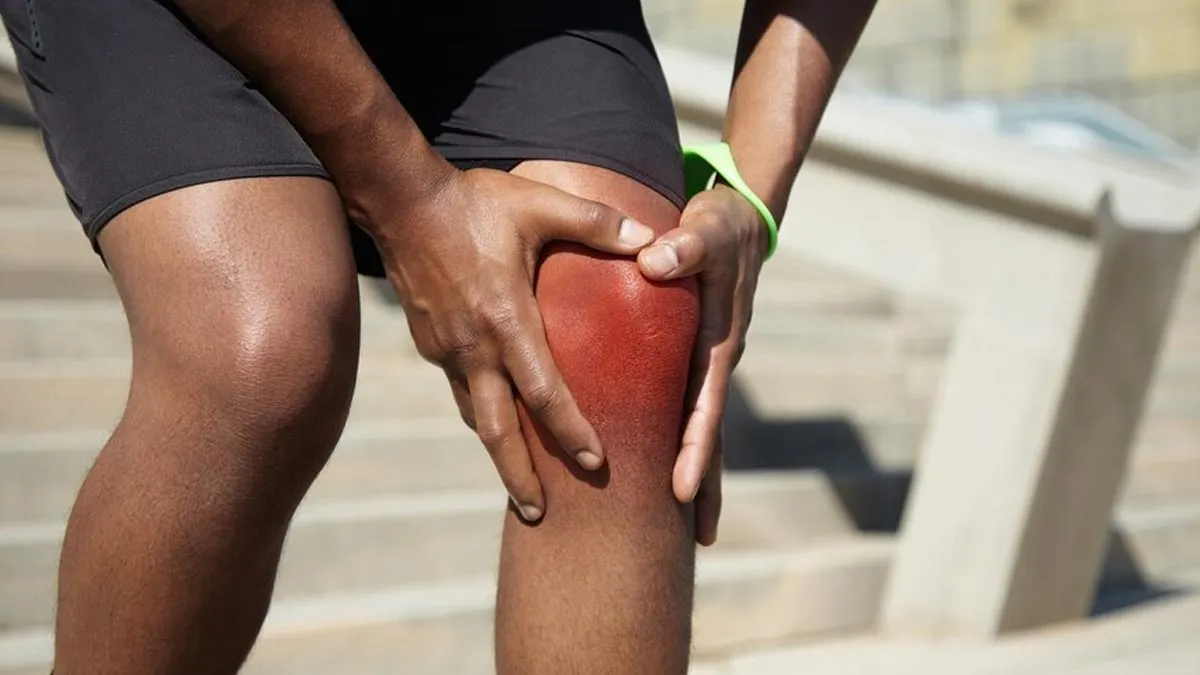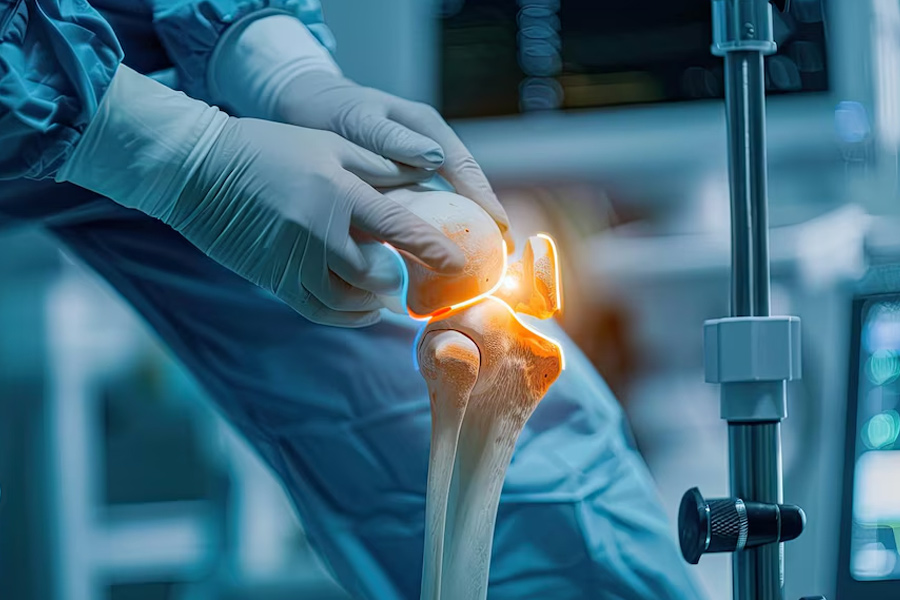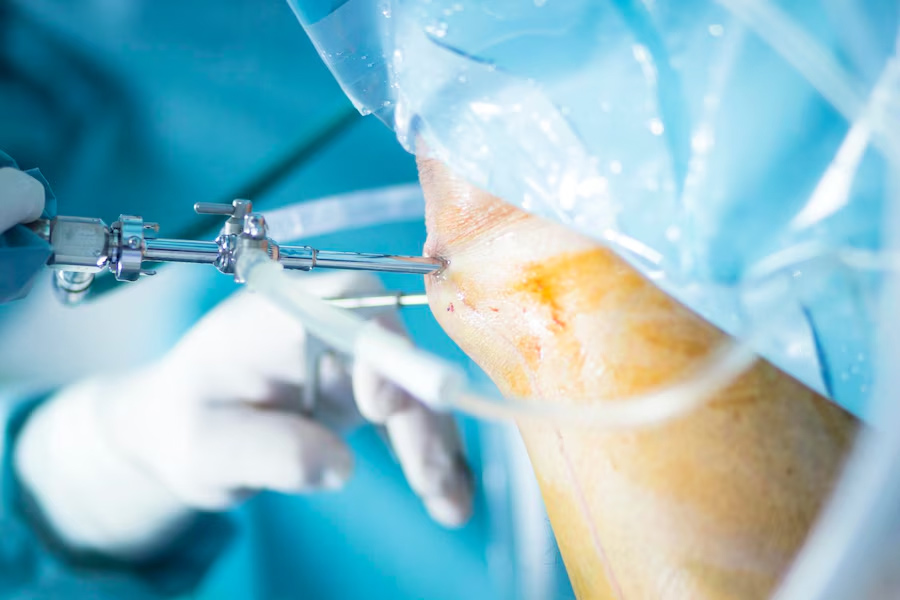
Four ligaments stabilise the knee, a joint that functions similarly to a hinge. The tissues in the knee called ligaments help control joint movement by joining the bones. At times, while playing or simply with a past injury resurfacing, your knee may move out of its place, causing an injury or “tear” to your ligament. These tears occur in different ligaments of the knee and are characterised by different signs and treatment options as well, maintaining similarities too. To better understand the same, the OnlyMyHealth team spoke to Dr. Manish Dhawan, Senior Consultant, Orthopaedics, Sir Ganga Ram Hospital, New Delhi.
Table of Content:-
What Are The Types Of Ligaments?

“The knee joint is held together by two ligaments. The anterior cruciate ligament (ACL) and the posterior cruciate ligament (PCL). The medial collateral ligament (MCL) is located on the outside of the knee joint”, says Dr Dhawan.
According to the Cleveland Clinic, the most commonly injured knee ligament is the ACL, which connects your femur (thigh bone) to your tibia (inner bone of lower leg) at the front. Located at the rear, the PCL connects the femur to the tibia as well.
It is less likely to sustain injuries than the ACL because it is stronger and thicker. The MCL, which is broad and flat and joins the thigh (femur) and shin (tibia) bones, stabilises the inner knee.
What Is An ACL Tear?
“An ACL tear is quite common among young individuals, often resulting from sports activities like football or a fall during cricket.” Three grades are commonly used to classify ACL injuries: 1, 2, and 3. The ACL sustains minor damage from grade 1 injuries, such as minor stretching, but the ligament still provides the knee joint with adequate stability.
ACLs that have been strained and partially ripped are referred to as grade 2 injuries, which are rare. Finally, when the ACL is totally torn, the knee joint loses all stability, leading to a diagnosis of grade 3 injuries, according to Johns Hopkins Medicine.
As per the Mayo Clinic, signs of an ACL injury often include
- A noticeable pop or a "popping" feeling in the knee
- Intense pain and an inability to keep participating in the activity
- Quick swelling
- Restricted range of motion
- A sensation of weakness or "buckling" when bearing weight
If any knee injury exhibits symptoms or indicators of an ACL injury, get medical help right away. A complex network of interconnected bones, ligaments, tendons, and other tissues makes up the knee joint. To determine the extent of the injury and administer the proper care, a prompt and accurate diagnosis is essential.
How Is An ACL Tear Treated?

The patient's symptoms, the results of the examination, the amount of growth that is still present in their growth plates, the type of ligament injury, and their goals for sports and activities all influence the available treatment options.
Non-surgical
For grade 1 injuries, nonsurgical therapy is usually appropriate. Physical therapy, immobilisation or brace use, and a gradual return to sports and regular activities can all be part of this.
Surgical
For patients with a grade 3 or total ACL injury, surgery is recommended. Depending on the kind of ACL injury, the patient's growth plates' state (open or closed) and the particulars of the injury, different surgical techniques may be used.
“Young patients typically require ACL reconstruction for this injury,” says Dr Dhawan. He then adds that for older individuals, treatment may involve isometric knee exercises without the need for ACL reconstruction.
What Is An MCL Tear?
-1737349878913.jpg)
“The MCL, located on the outside of the knee joint, can suffer injuries that lead to bruising and swelling, wherein a complete tear necessitates surgical intervention. Partial tears can be managed by applying plaster for three weeks, followed by exercises to improve the range of motion in the knee joint”, says Dr Dhawan.
MCL injuries can be extremely painful. For most people, the inner side of the knee feels sore and uncomfortable. Here are some other indicators of an MCL tear;
- You can get swelling in your knee.
- If your knee is injured, you may hear a popping sound.
- Your knee can go sideways.
- Walking may be challenging, or you may feel as though your injured knee prevents you from bearing weight on that leg.
- Even if walking doesn't hurt, you may feel as though you're going to fall because your knee is unstable. In this scenario, some people are able to walk, but their knee feels loose and moves more than it should.
- The joint may lock or catch when you move, or your knee may feel stiff.
How Is An MCL Tear Treated?
According to the University of Rochester Medical Center, here are three major treatment options.
Conservative approaches
The best ways to treat an injury are frequently to rest, take medicine, and participate in physical therapy.
Injection therapy
Medication given directly to the site of injury can be an effective treatment for certain conditions. Doctors use ultrasonography to pinpoint the exact area.
Surgical procedures
Surgeons can view the inside of your affected joint by making a small incision and inserting a camera. As they remove pieces of bone and cartilage, restructure bones, or mend torn ligaments and tendons, they watch their work on a screen.
Takeaway
Going through a physically altering injury can be distressing, but reading and learning about it can dispel your worries for a short while. Being aware of what may come or what you are currently facing, will aid you in making conscious treatment choices and help you ask the right questions to your doctor. This will help you be prepared for whatever may come next.
Also watch this video
How we keep this article up to date:
We work with experts and keep a close eye on the latest in health and wellness. Whenever there is a new research or helpful information, we update our articles with accurate and useful advice.
Current Version